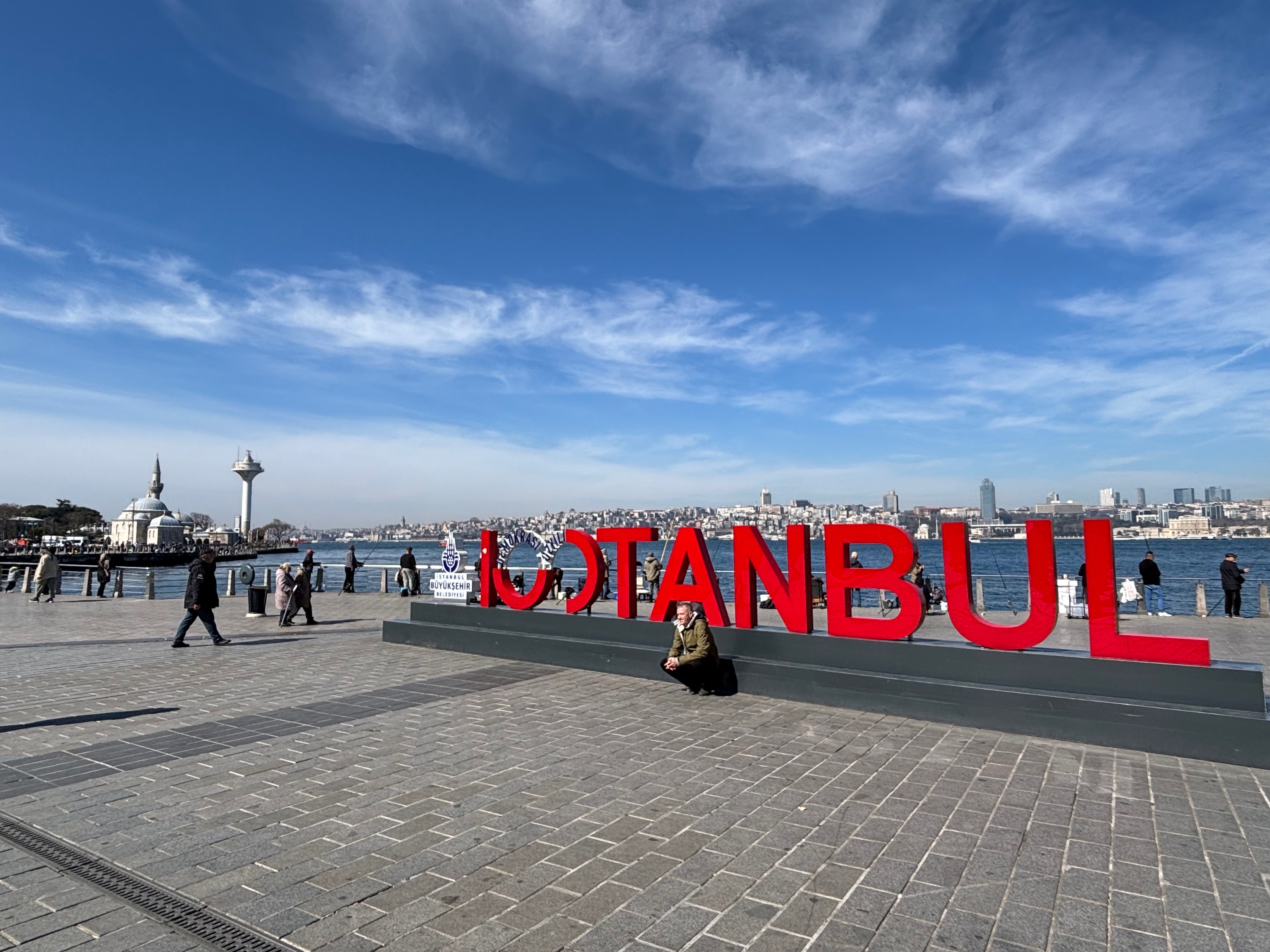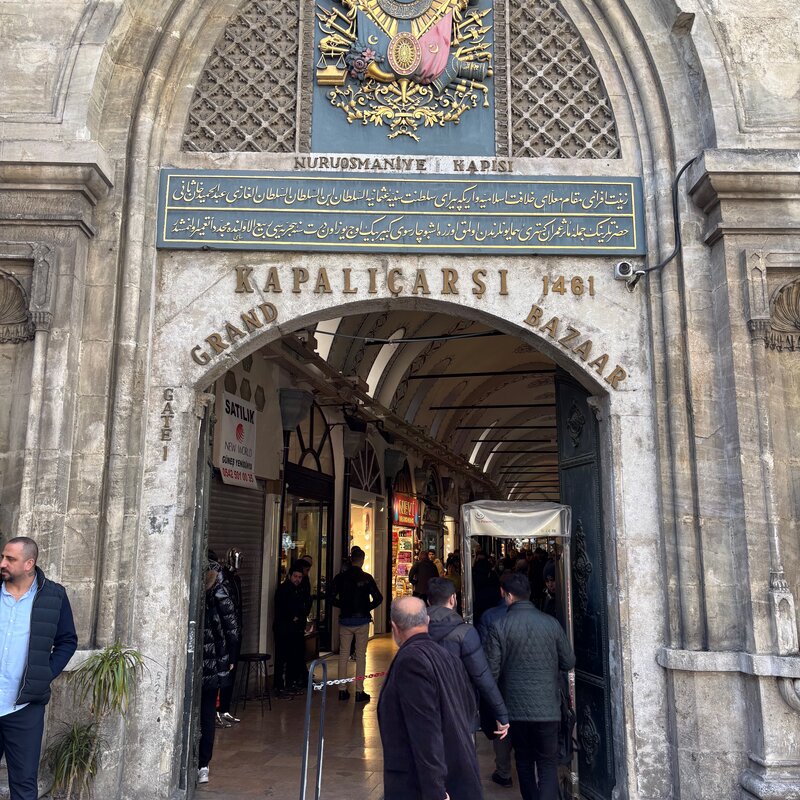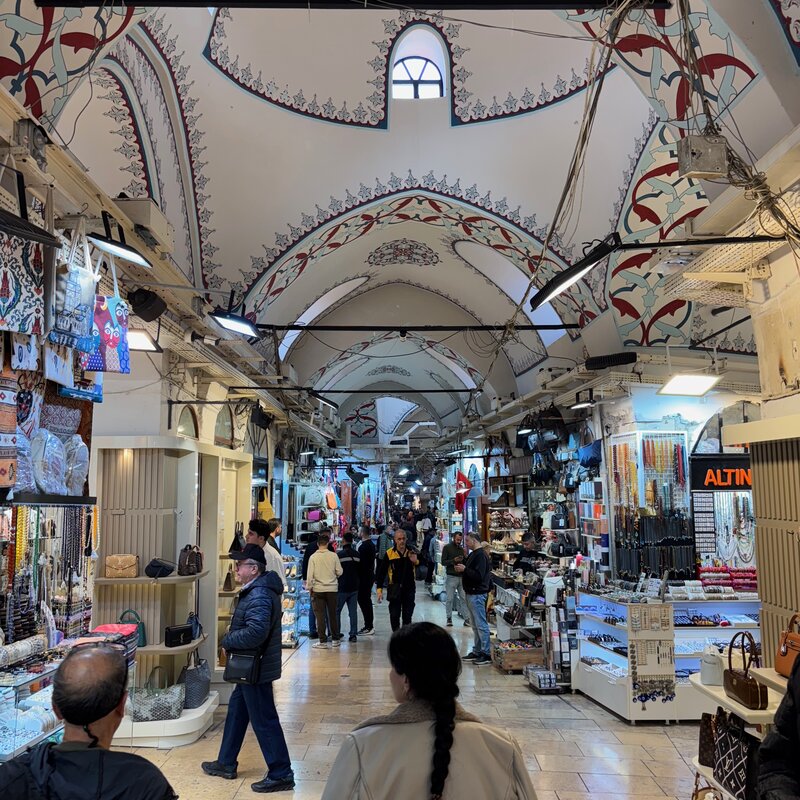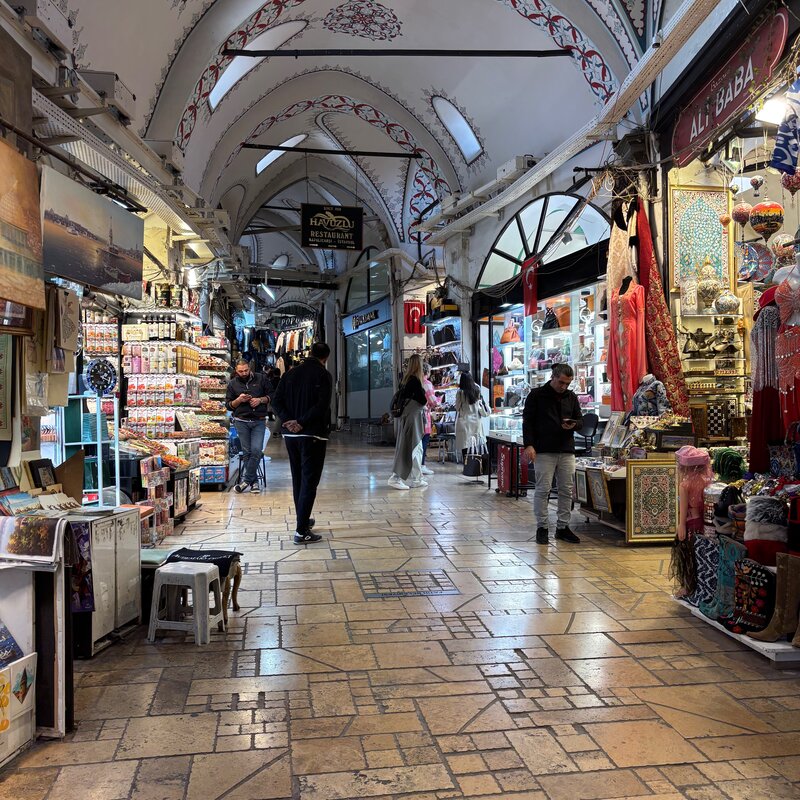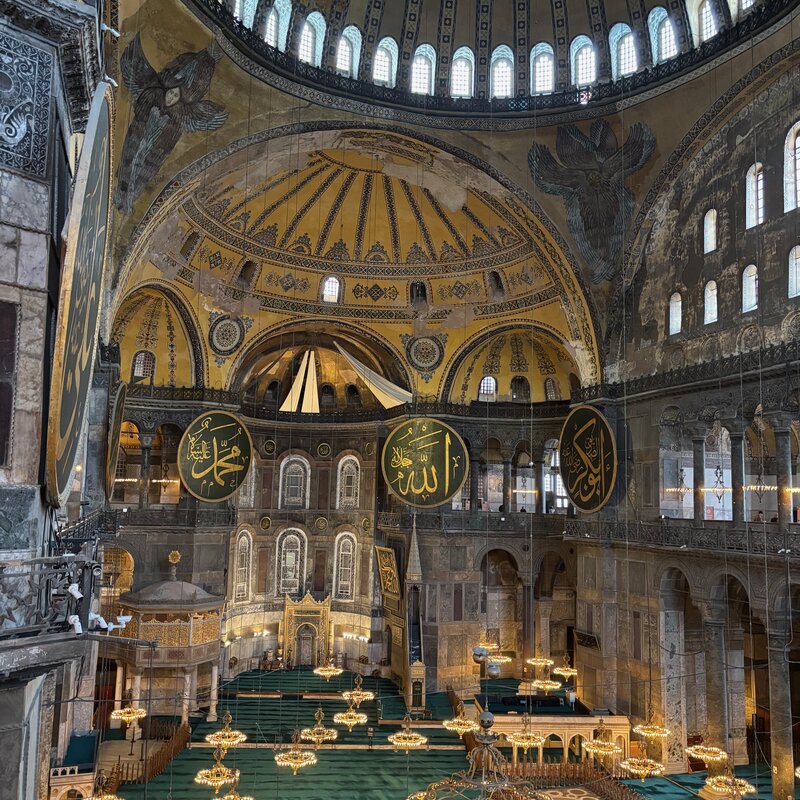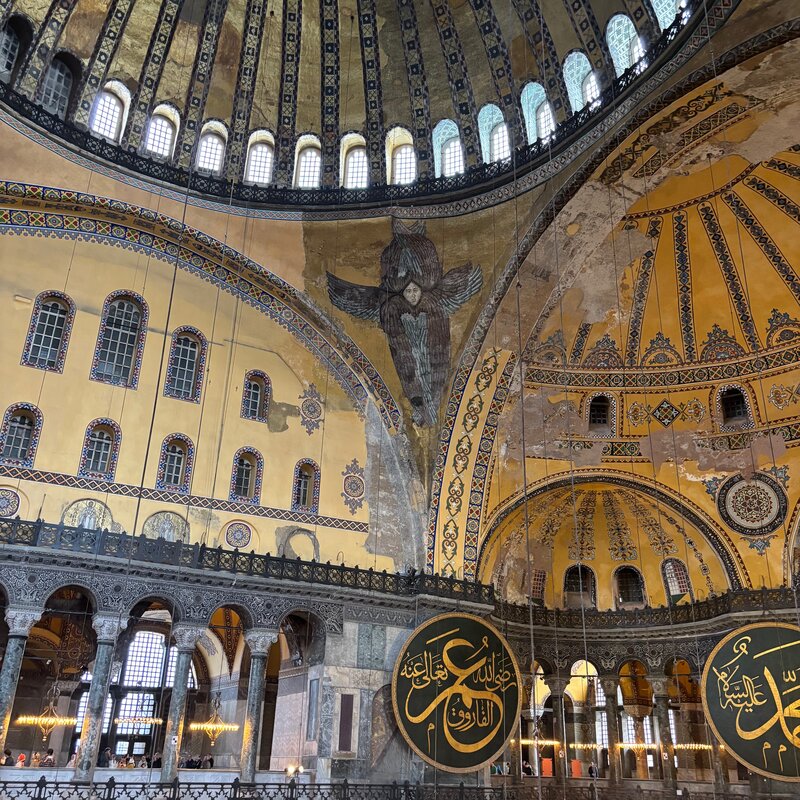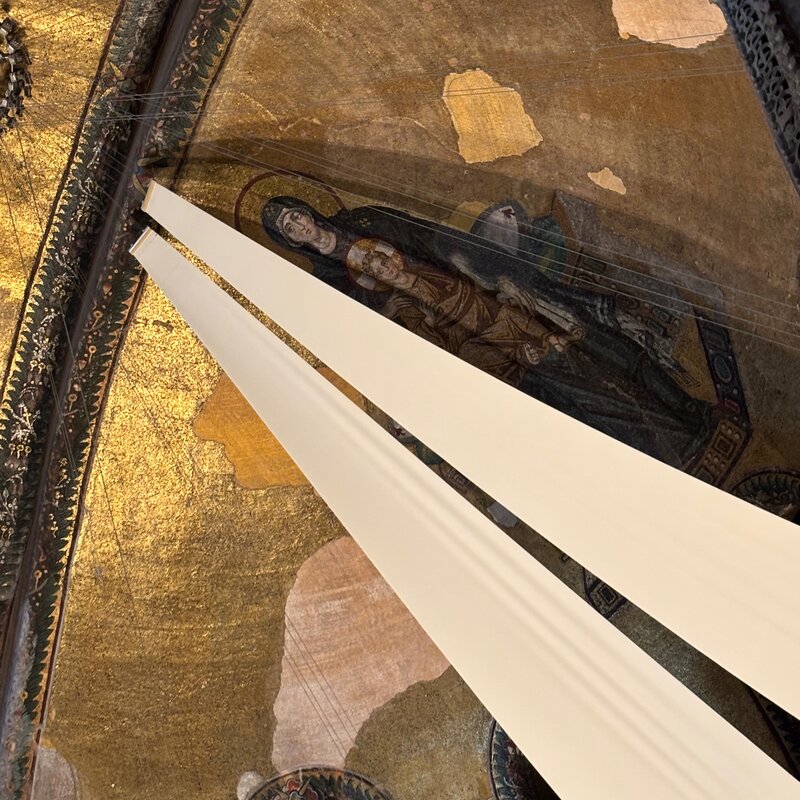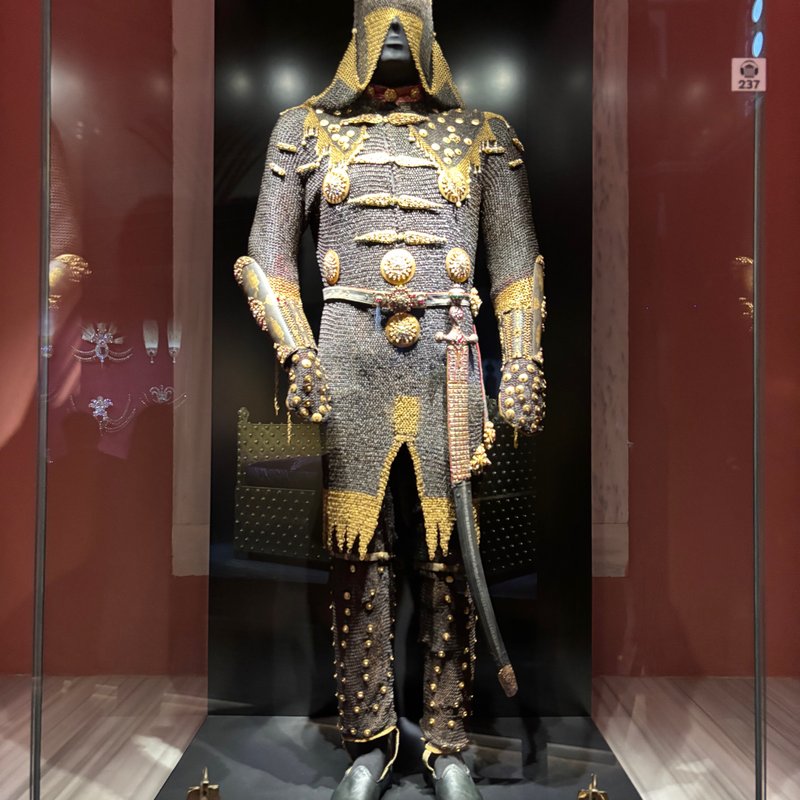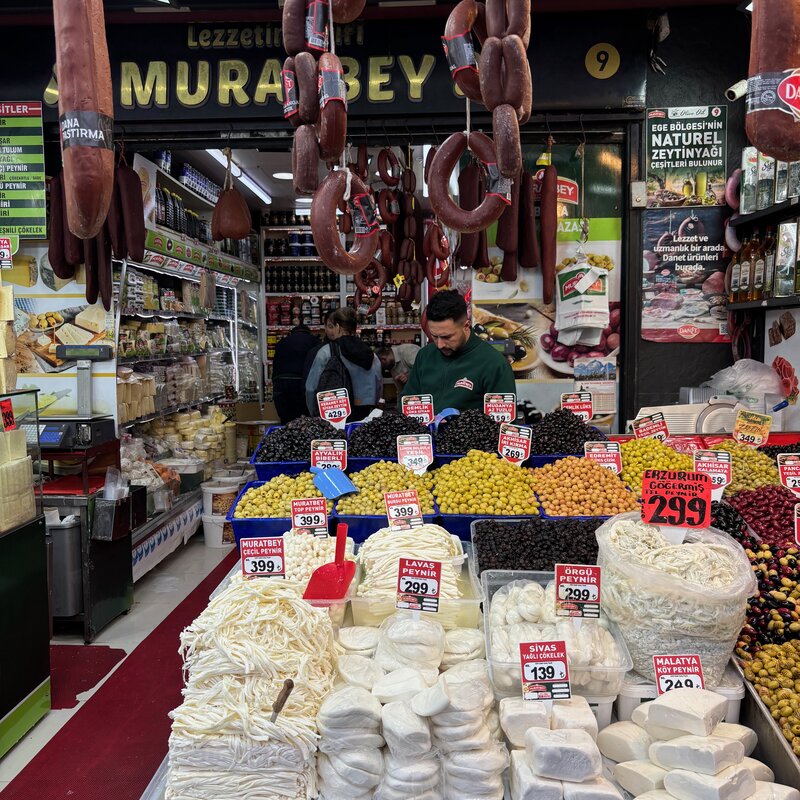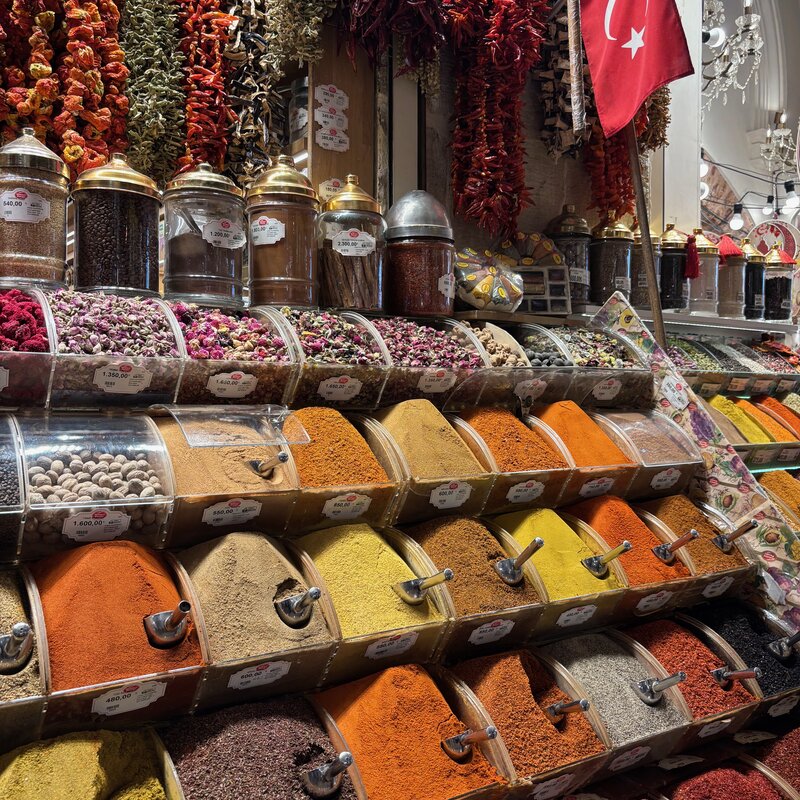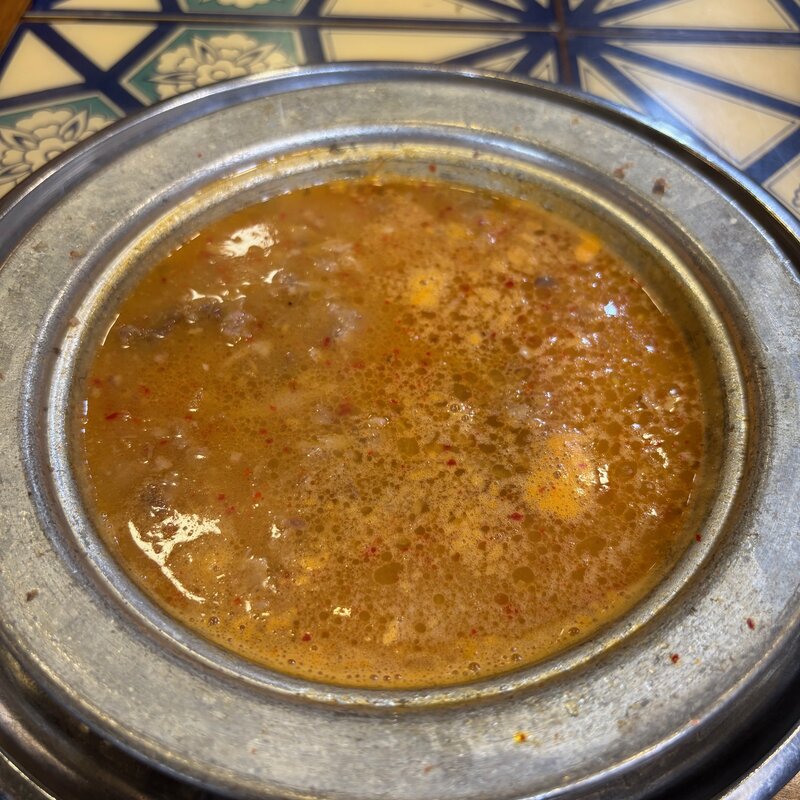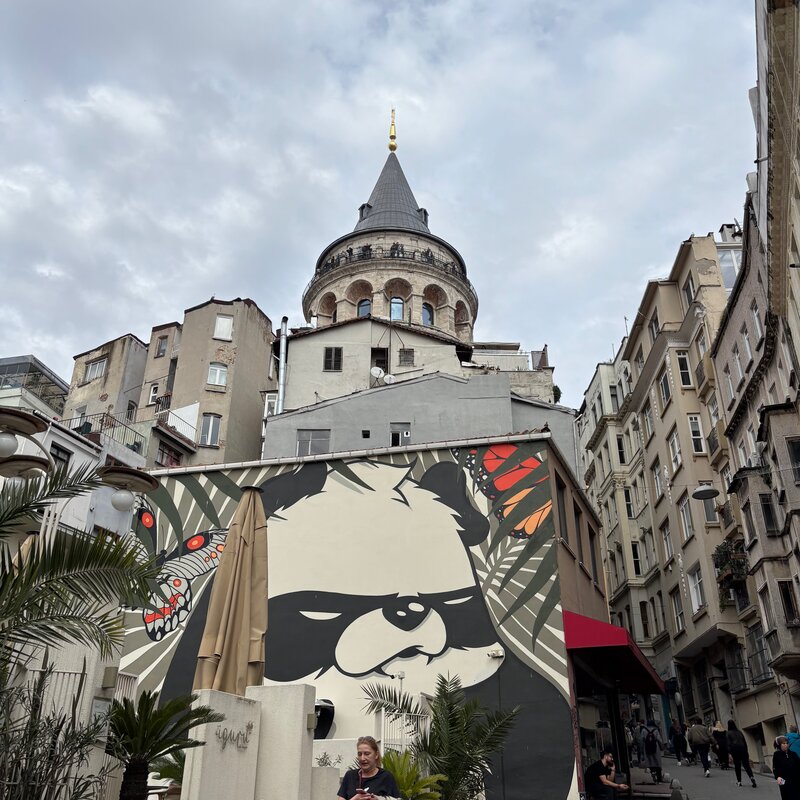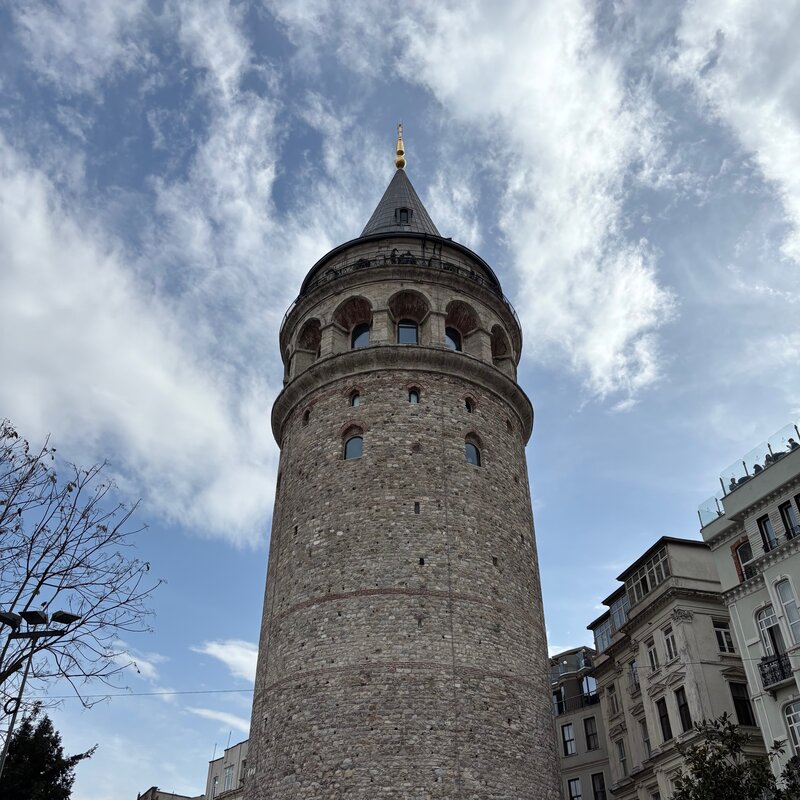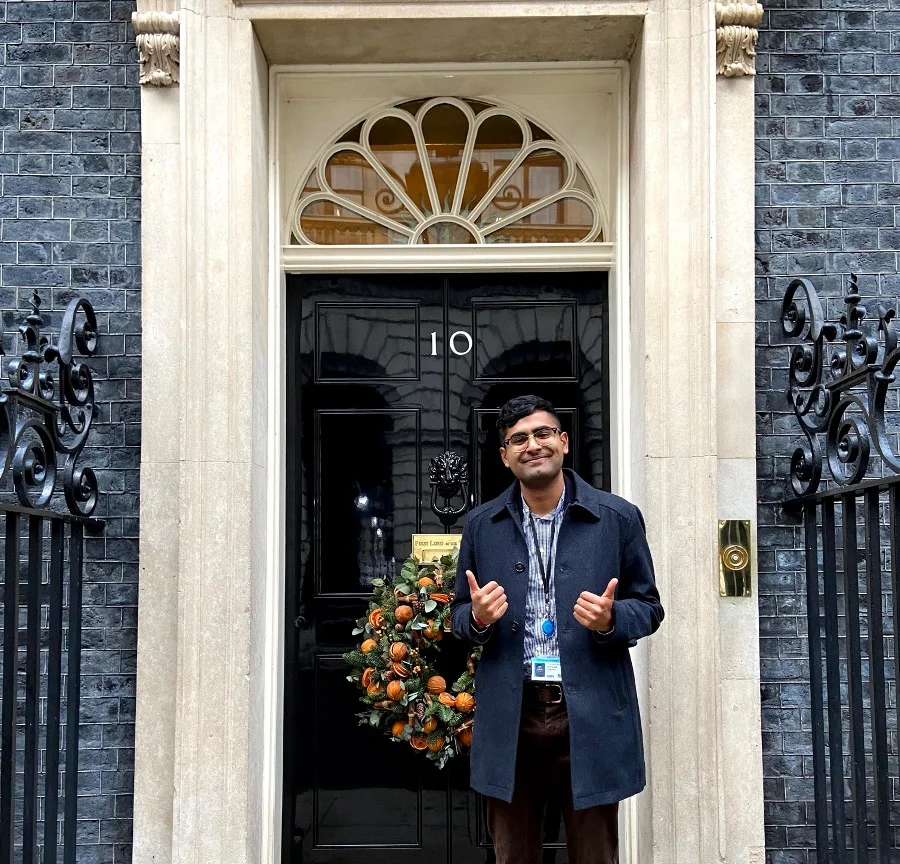Istanbul, a metropolis steeped in history and strategically located at the crossroads of Europe and Asia, showcases its magnificent imperial heritage, extensive marketplaces, and an energetic modern urban landscape. The city boasts a remarkable history. Mehmed II conquered Constantinople. Once thought impenetrable, the city then lay defeated and in ruins. Its fall extinguished the last remnants of the Roman Empire, forever changing the city, culture, and its people.
During my visit, I noticed the number of new buildings and construction sites. Istanbul seems caught between its past and a strong desire for modern wealth. This push towards modernity, however, feels like it’s diluting what makes Istanbul so special. As the city increasingly leans towards conservatism, I wonder what will become of its people and if it will maintain its past vibrancy. Few cities possess Istanbul’s heritage, and I hope it never loses its undeniable uniqueness.
Although I visited in March, even during Ramadan, I was surprised to find the city alive, particularly in the evenings, and less crowded than expected. The weather treated me to a pleasant and consistent 20°C, which was fortunate for that time of year.
Day 1 - Flying into Istanbul Basilica Cistern
My journey was difficult. I went to sleep at 8 pm, then woke up at 12:30 am to catch a bus at 1:45 am to Luton Airport, and later flew to Istanbul at 6 am. But hey, here we are.
If you want to go to the old town, take the Havaist bus to Aksaray. Getting this bus is relatively straightforward, and it takes one hour. You can buy a ticket on the bus itself, use the app, or even get a ticket at baggage claim. It cost me 275 lira.
Accommodation:
I stayed at Hotel Gulsoy. Partly because it’s in the old city, making walking to the main sites convenient. In reality, I booked this for the underground pool. It’s not going to blow you away, but it beats the hostels I usually stay at.
I made the Basilica Cistern my stop. During the Byzantine era, people stored water here to support the city’s burgeoning growth. Now, you can go underground to see the towering columns. Carvers even etched some with a portrait of the tragic Medusa. Whilst visiting was cool, I would not pay the £28 (at the time of writing) again. Navigating the cistern took about 20 minutes, even with an audio guide. I find the price of some of the tourist attractions here too high.
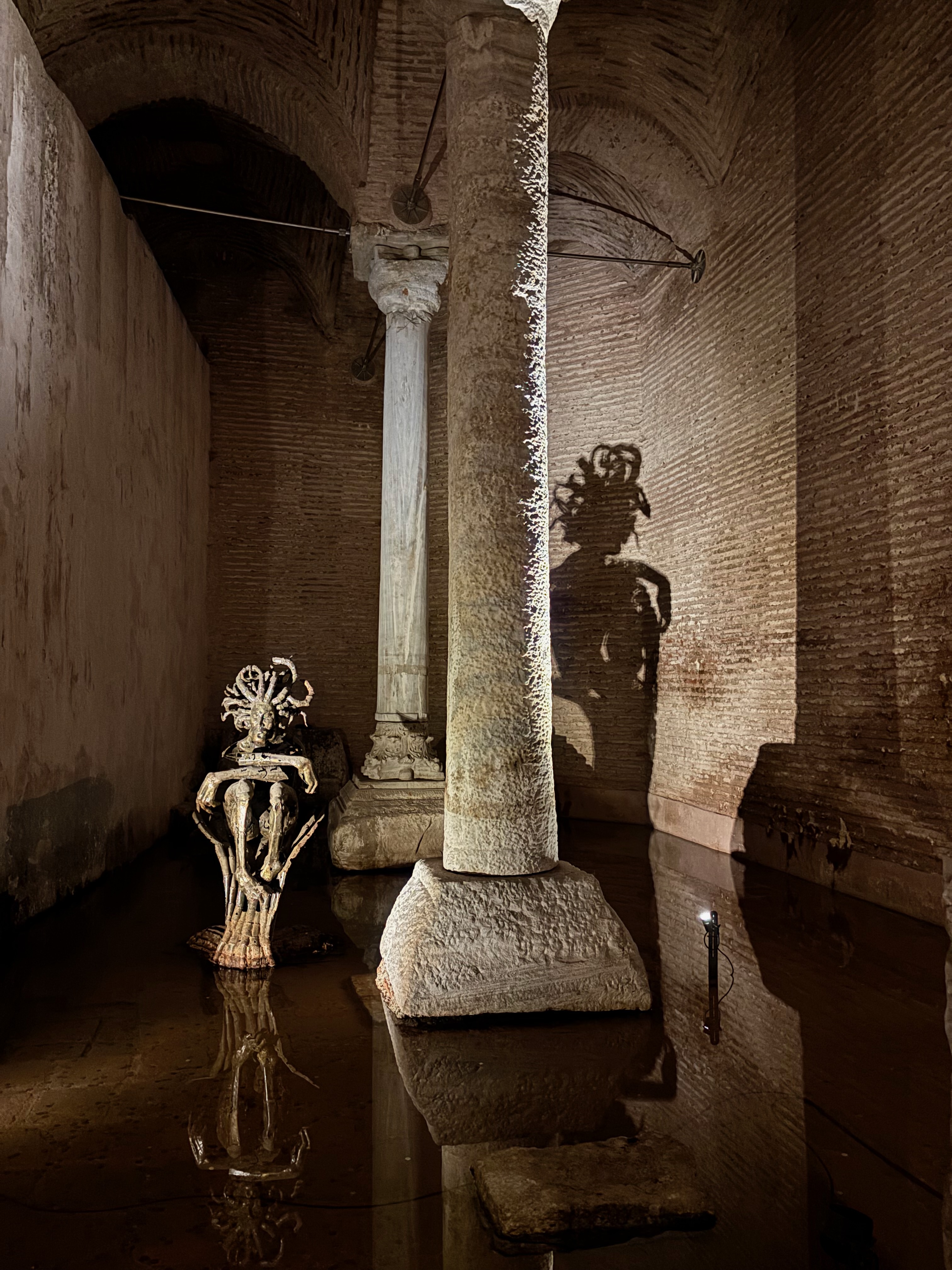 Medussa casts a shadow.
Medussa casts a shadow.
A small army in front of every restaurant can off-put you as they jostle to get your attention to eat at their establishment. The older, more established professionals entice you with a softer touch. Eating at the Michelin-recommended Khorasani, I saw how they would entice diners with a smile and a joke. It seemed to work. My meal itself was an Ottoman speciality: a slow-cooked meat dish (black plum stew) with apricots and plums. I licked every inch of the bowl clean. For now, I’m doing my best to avoid ordering the easy option. But don’t worry, I’ll try the kebabs.
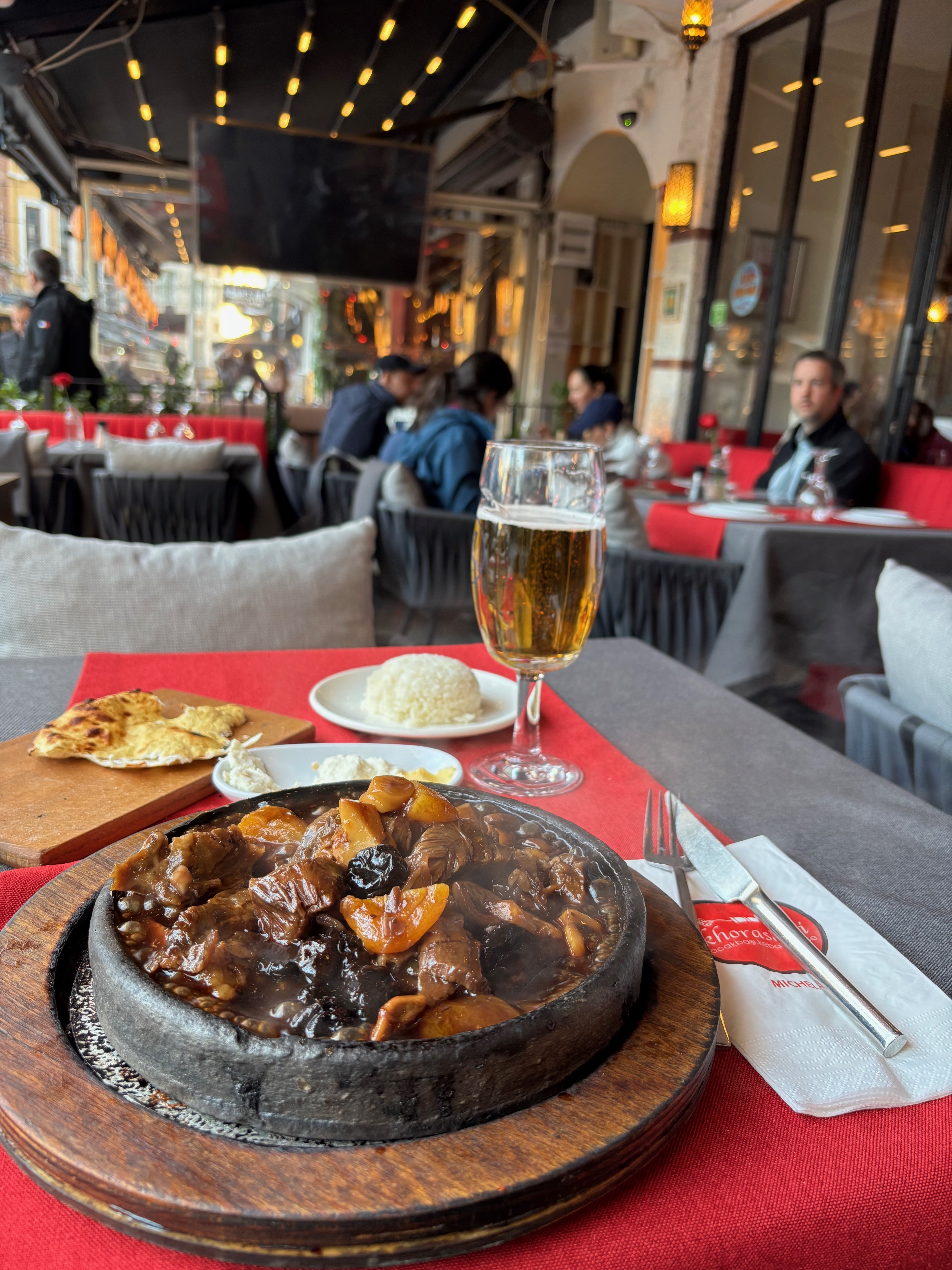 My favourite meal of the trip? Black plum stew hands down.
My favourite meal of the trip? Black plum stew hands down.
So many cats roaming everywhere is a sight I’m not used to seeing. This would be my mother’s nightmare, but locals consider them a natural part of city life, and as a result, they afford them the same respect reserved for royalty.
Day 2 - Lamp workshop, Grand Bazaar and Turkish massage
I booked a mosaic lamp workshop for only £15 – a bargain! Most local shops sell them for at least £40-£50. Making my own felt more meaningful. I almost missed this workshop because I stupidly misread the meeting point instructions. The correct meeting point is in Üsküdar. Most travellers tend not to visit here, but it’s worth it, especially if you want to see a more authentic and less touristy version of Istanbul. The neighbourhood overlooks the Bosphorus, which means you can walk along the river. I saw a lot of people fishing here. On one end is the Kız Kulesi or the Maiden’s Tower (you do need to take a ferry to visit it). Much further along is the Mihrimah Sultan Cami. Beautiful mosques dot Istanbul wherever you go. A famous Ottoman architect built this one in the 16th century.
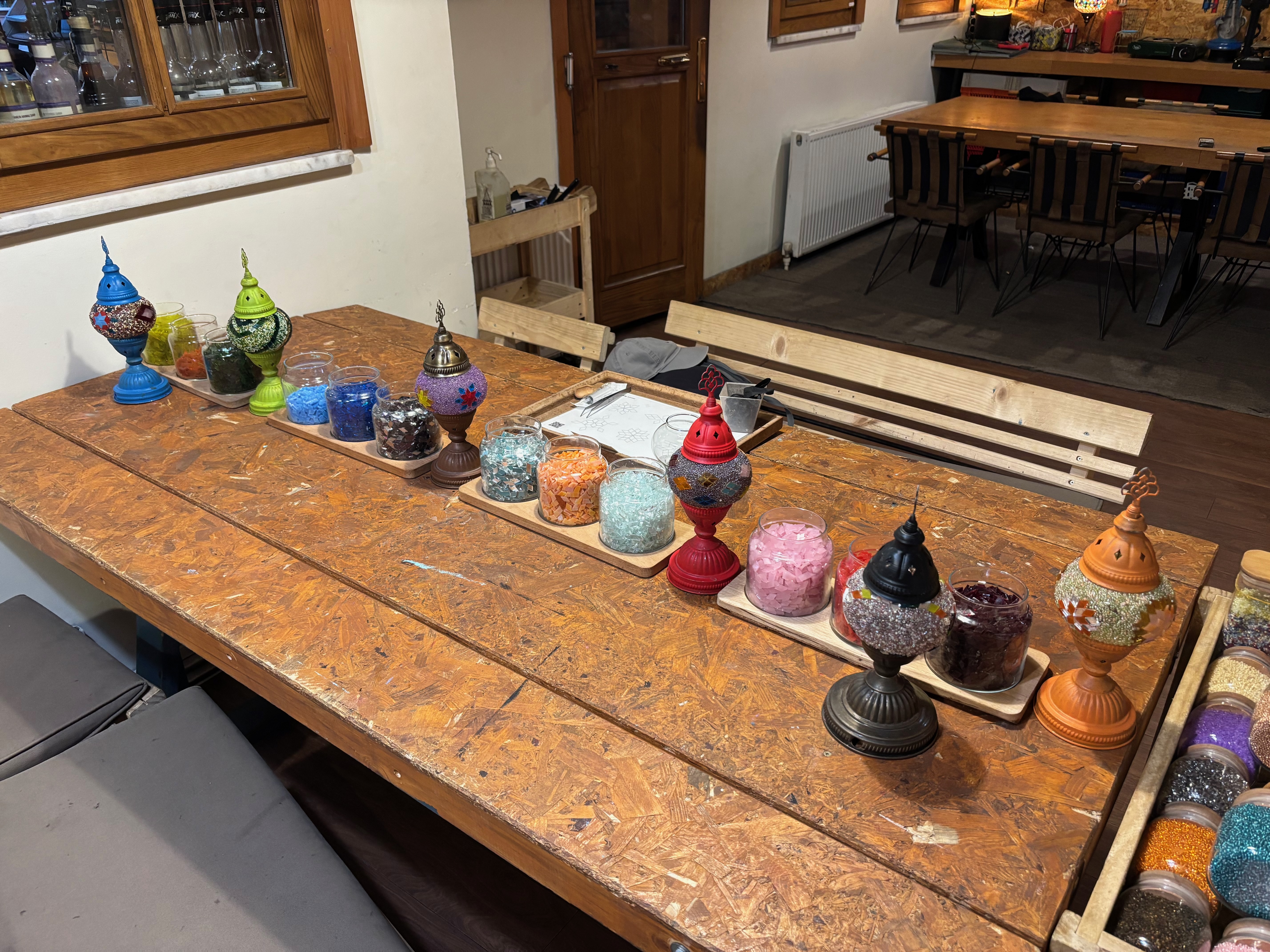 Use one of many multi-coloured glass shards to craft your own distinct lamp.
Use one of many multi-coloured glass shards to craft your own distinct lamp.
Speaking of ferries, they offer a cheap way to get onto the Bosphorus and visit Istanbul’s neighbourhoods. Conveniently, the ferry accepts contactless card payments.
I took the ferry back to the old town. At the Buhara Ocakbasi restaurant, I ordered a piping hot kebab on a bed of smoked aubergine puree, yoghurt, and garlic. It was enjoyable, if a tad oily.
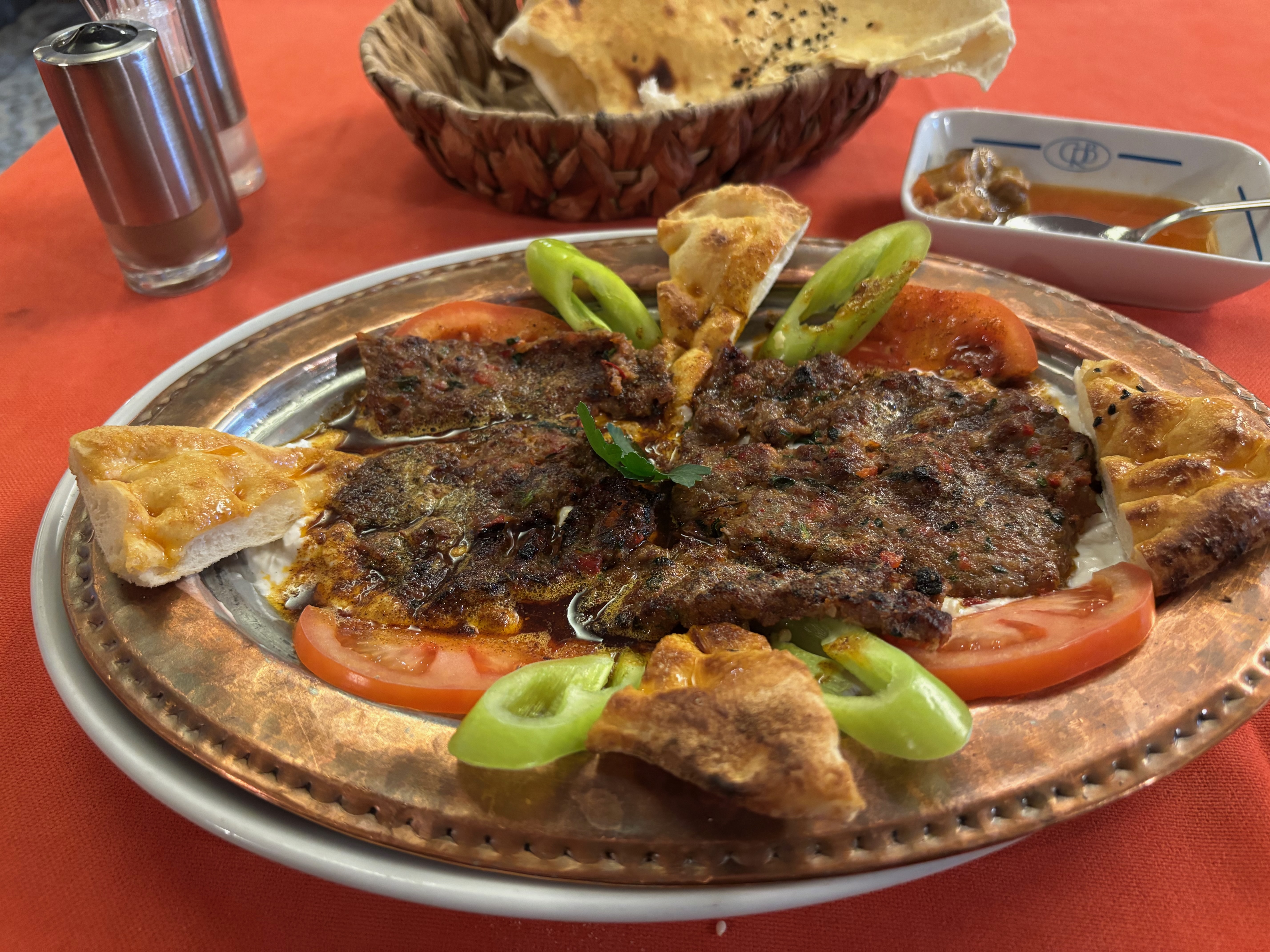 One of many kebabs I ate during my trip!
One of many kebabs I ate during my trip!
My energy levels replenished, I explored the labyrinth that is the Grand Bazaar. Don’t even try to remember where you entered; just surrender to getting lost. One of the oldest markets in the world contains over 4,000 shops. My number one tip is to haggle. Get a sense of the prices by inspecting what you like and seeing what each shop will sell it for. For one item, I saw a variance of almost 400 lira. A local suggested the Egyptian Bazaar or Spice Market as a cheaper alternative.
After a long day of walking, I booked a Turkish massage (Hammam) at the Beethoven Senfoni Hotel through GetYourGuide. If you book the same one, be warned that multiple hotels in the area have a similar name. I get it, he’s a fantastic composer! If only one decided to differentiate by calling themselves Mozart. Now that would have struck a chord. Okay, bad jokes out of the way, the massage itself was fine, nothing spectacular. Once it’s over, you can use the steam rooms and then get a foam wash. They essentially lather you up with foam, wash you with large doses of warm water through a bucket, and scrub you vigorously. If you are desperate to do this, then I’d look elsewhere.
For dinner, I went to the Deraliye Ottoman Cuisine restaurant. Another on the Michelin guide, this restaurant specialises, as the name suggests, in food served for royalty. I got the lamb tandoor. They cooked this lamb in a traditional way and served it with spicy rice. A lovely meal, though I didn’t think it was worth the amount it cost me. As I was travelling solo, I couldn’t order the tasting menu. If you want to try this place, I recommend going for the lunch tasting menu as it’s more reasonable.
Top tip: order Efes beer whilst in Istanbul. It’s so refreshing!
Day 3 - The major landmarks (Hagia Sophia, Blue Mosque and Topkapi Palace)
Conveniently, all the major landmarks are within walking distance of one another. For ease, I booked a Viator guided tour of the Hagia Sophia and Blue Mosque. You don’t need the tour, you can easily do this yourself. The Hagia Sophia is free, but you pay to visit the Blue Mosque. Both are spectacular.
Mehmet the Conqueror (remember him from my intro?) converted the Hagia Sophia, a former Byzantine church, into a Mosque after his conquest. You can see remnants of the church in the mosaics of past Byzantine emperors and mosaics of Mary and Jesus. Seeing the face of an angel was my favourite part. After the Ottoman conquest, they covered many of the mosaics and paintings to allow for prayer. This had the effect of preserving them for over 400 years. Now they’ve uncovered them, and we’re all the better for it.
Afterwards, I visited the Blue Mosque. Locals don’t actually call it that; they know it as the Sultan Ahmed Mosque. The ‘blue’ in the name comes from the fact that beautiful blue tiles fill the inside. They chose blue because it was the most expensive colour to make at the time.
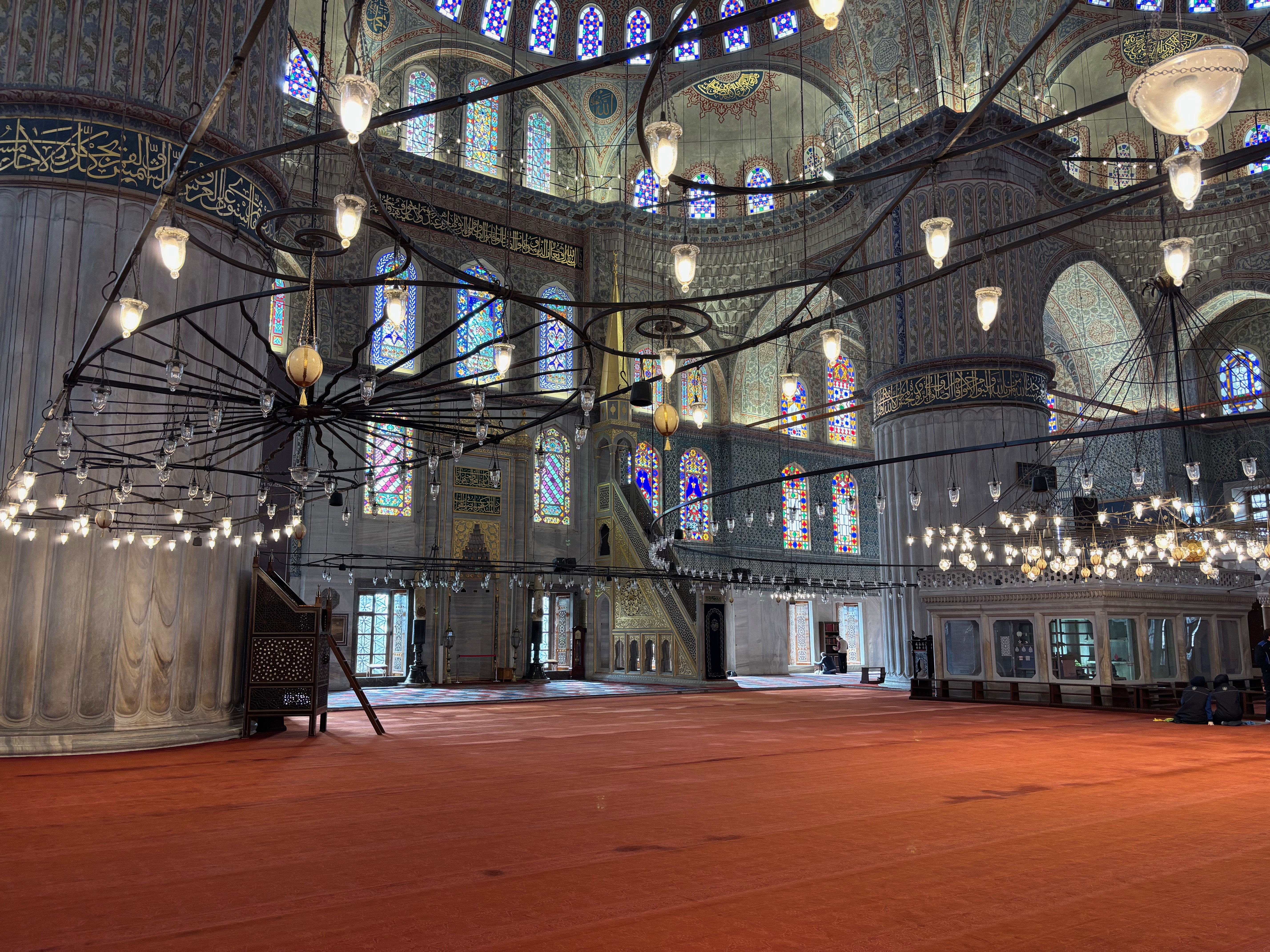 Sultan Ahmed Mosque (Blue Mosque)
Sultan Ahmed Mosque (Blue Mosque)
After a quick coffee refuel, I did the audio tour of the Topkapi Palace. Booking this through Viator was helpful because it allowed me to skip the queue. The audio guide itself is comprehensive, though a little fiddly. Make sure you have data to access it.
You pay extra to visit the Harem, and it’s worth it. The word Harem derives from Haram and effectively means private. Seeing how the women lived in the Harem, alongside their eunuch bodyguards, was fascinating. Seeing the Topkapi dagger and the relics of the Prophet Mohammed was a personal highlight. I’m not sure if those relics actually belonged to the Prophet, but if they did, wow!
You can spend 2-3 hours here. By the end, I was wiped out, so I returned to the hotel. I only left the hotel to eat at Donerci Sahin Usta, a renowned budget eatery. I ordered the mixed meze and a delicious lamb kebab (Iskender Kebab) with a tomato base and yoghurt.
Day 4 - Food tour!
For my final full day in Istanbul, I wanted to explore beyond the touristy areas. I booked the Istanbul Taste of Two Continents food tour through Viator. This fun tour, though a bit pricey, allowed me to get to know the city through its food.
We started the day at the Spice Market, where you find typical spices used in Turkish cuisine. After that, we grabbed a typical Turkish breakfast, and I ate a mixture of soft cheeses, olives, an egg and tomato dish, honey and yoghurt, a spicy tangy sauce (Acuka), and a typical sesame seed morning bread (Simit), alongside some Turkish tea. What a fabulous way to start the morning.
After a hearty breakfast, we took the ferry to Kadiköy. This is a great place to try lots of different food, visit antique shops, buy gifts for loved ones, and party. It’s a student area, so it feels alive. Again, I tried lots of different foods, from Ayran (yoghurt drink a bit like lassi), stuffed mussels, Lahmacun (a Turkish pizza, rolled up like a taco), Baklava (of course), Balik Ekmek (grilled fish in Turkish bread), Turkish rice pudding, a concoction of pickles in a beetroot drink, Kokoreç (grilled lamb or goat intestines), and the place where they invented Iskender Kebab (lamb in a tomato-based sauce, served over pide bread, butter, and yoghurt). My favourite of the day? Beyran soup, a traditional lamb soup. It blew my socks off. I couldn’t get over how flavoursome it was. Coming from the UK, I didn’t realise how much Turkish people like soups. If this is my first exposure, I can’t wait to try other soups.
I took another ferry to Karaköy (you can burn calories on the ferry, right?). Along the ride, I even saw dolphins. I saw the Galata Tower up close and personal. If you want panoramic views of the city, this spot is good. Be warned, the walk to the tower is uphill. If shopping is your thing, check out Istiklal Street.
I hope you enjoy the wonders of Istanbul!

